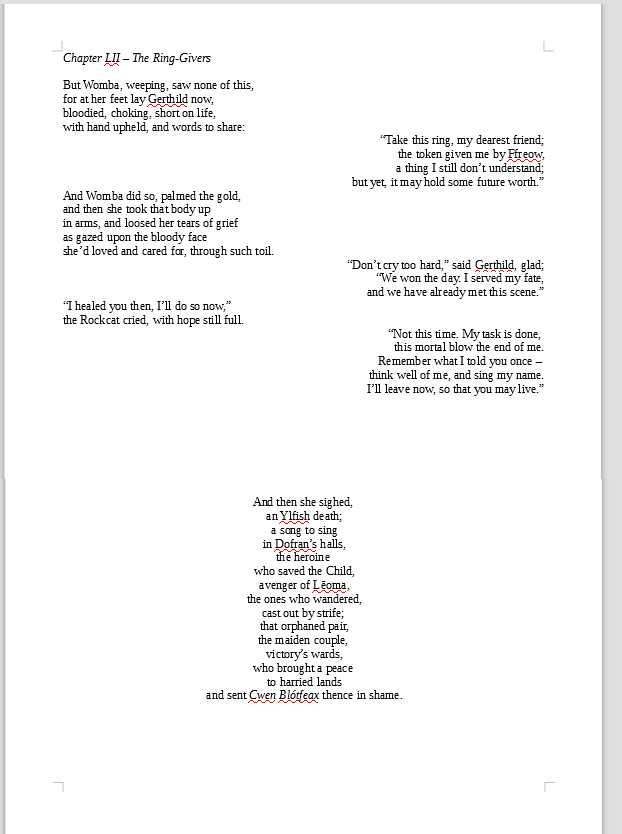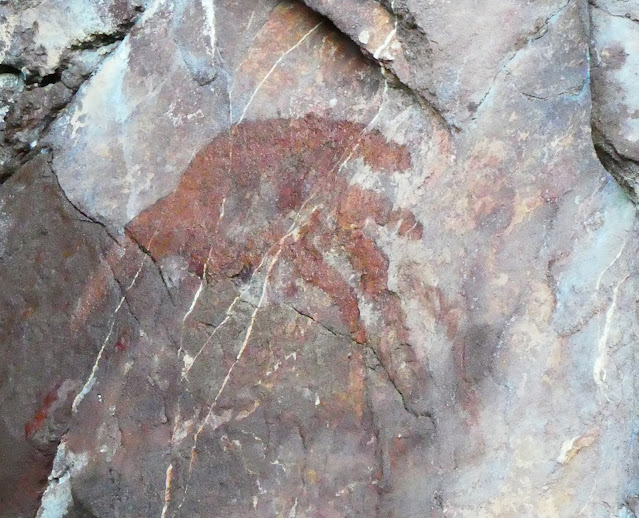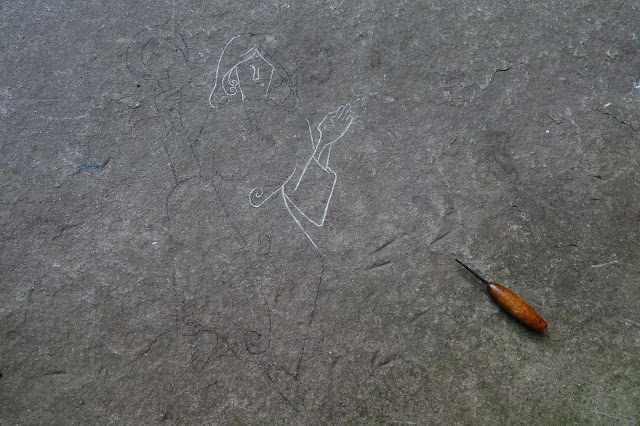Space and Placement: 2
Looking back over some of the modernist poetry we studied in Semester 1's Humanities class, I've continued to apply more radical visual structures to the poetic text, using words and their placement as a means of enforcing certain feelings or concepts for the reader: for example, during an earlier scene where the main character struggles up the rocky path to her home at a pivotal moment, separating each word describing the journey onto a line, spaced out from the previous, and following, words to suggest a tricky series of steps (compounds and phrases such as 'rock-tripped', 'thorn-pricked', 'branch-beaten' enforcing the difficulty of the climb).
And, in the climactic battle - the main emotional thrust of which is not the overall victory of the allies, or the defeat of the tyrant king and queen - but the loss of the main character's best friend, the effect of which reaches its pinnacle in the third page below, signifying almost unbearable isolation and loss:







Comments
Post a Comment